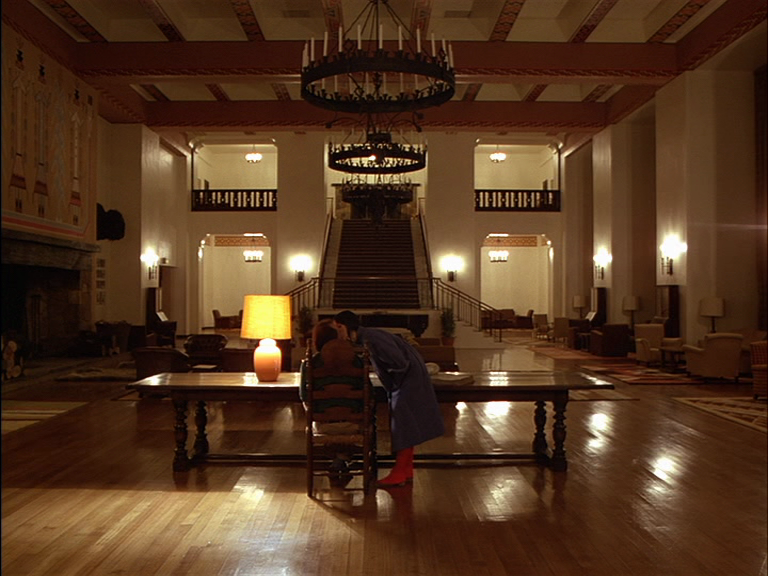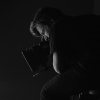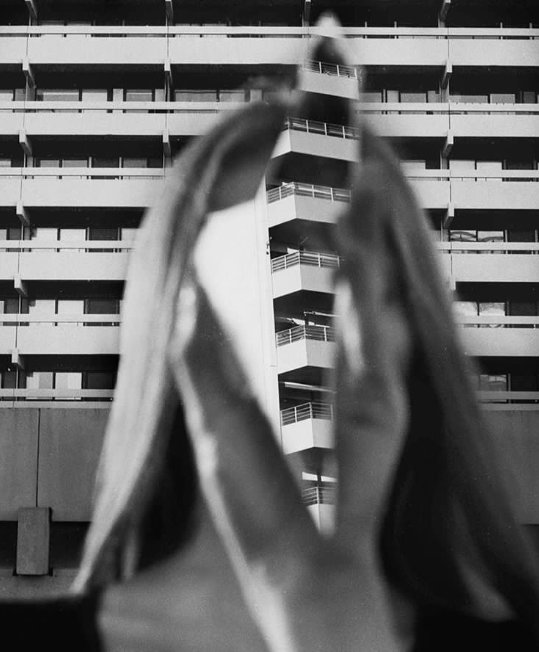-
Posts
40 -
Joined
-
Last visited
Posts posted by Kaspar Kamu
-
-
This isn't still available by any chance?
-
13 hours ago, Robert Houllahan said:
Did the scanning facility match the timecode of your original dailies scan?
I assume so..
-
Of course! Editing on Premiere Pro CC and grading on DaVinci 15.
-
ROOKIE QUESTION ALERT!
Dear trusted community,
I've just picked up the 2K DPX files for 3 cans of 16mm I shot a month back. But I must admit I'm completely at a lass as to how to conform my existing timeline of proxy footage to full resolution. Can someone help me by maybe sending a link to a video or perhaps a step-by-step outline of the workflow?
Sorry for the novice question!
Best,
K
-
Thanks for the replies! We ultimately decided to get it developed straight away.
-
Dear community,
I'm shooting a little teaser/proof of concept on super16 next week. Due to our low budget we've decided to divide up our costs by first buying the film, shooting and then keeping the exposed film in the fridge until we can afford process and scan.
In your opinion, how long is it safe to keep the film in the fridge without it affecting the final quality?
Thanks in advance!
-
Dear all,
I'm shooting a teaser/proof of concept for a larger commercial in a few weeks. The budget is virtually zero but we're getting sponsorship here and there.
I have a question regarding the opening shot. It begins with the camera traveling over the pavement in at relatively high velocity. The camera comes to a halt and the camera slowly tilts up to reveal a young boy beaten, bruised and bloody from skateboarding.
I'm thinking of rigging the camera somehow onto a wheelchair which would provide us with relatively smooth shots. I still want to retain some level of organic shakiness in order to emulate it being the POV of a skater. We'd still have to create some kind of rig with a tripod head which would allow me to tilt up at the end of the shot.
What are your thoughts? Would you do it differently?
Thanks in advance! -
Not sure if I'm in the right place, but I rewatched Post Tenebras Lux by Carlos Reygadas and was captivated by the opening scene. It got me thinking how the "halo effect" is pulled off. Is it done in camera (vaseline on a clear filter, perhaps?) or done in post?
Here's a link:
https://www.youtube.com/watch?v=B7T1-DemdkE&t=213s
The effect in question can be clearly seen 03:28!
Thanks!!!
-
12 hours ago, Tim Smyth said:
I love you idea David. My experience is anything you can shoot on the set is better than dealing with it later. You will also have to transfer without any gate weave, or duplicate it in the matte. Shooting the effect live on set you won't have to worry about that.
Yes, for sure! We decided to go for Mr. Mullen's idea in the end!
-
I'd almost suggest doing it live with a big photo blow-up of the mountains on posterboard to reflect into the mirror, that way you'd have the correct focus rack from reflection to mirror. As the reference shows, when you focus on the reflection you are also focusing on the deep background behind the mirror though a photo blow-up won't be as far away.
I'm just scared that that would compromise the realism of the shot. We're not sure if we're going to have the mountains or the city in the reflection. Or both separately. If it's the city we could get away with it with sound design, etc. But with the mountains I'd like to see trees moving, birds flying, clouds changing and so on.
Not a bad idea though.
-
Its probably possible to track without any colour but I guess you could risk loosing the edges - if it reflects something of similar density to background.
Covering it with a colour thats distinct enough from the surroundings would make life easier. It also depends where the actors fingers are, if they don't go in front of the mirror then a simple corner pin track would work and it simple. If the edges of the shard are crisply in focus they can serve as their own tracking marks if contrast is good.
Otherwise its Keying or Roto of some combination of to cut round the fingers- might get tricky if the hands cast a shadow on the glass.
Also Super 16 can be less good for comping if your using faster stocks. So use the slowest stock you can get away with to give you as much detail and small amount of grain to work with.
The issue in your reference shot is the shard of glass is out of focus - that may make comping difficult. But it might look weird if the reflected mountains are in focus and your shard is in focus at the same time - it would be two points of focus unless you settled for very deep DOP.
If you want the soft edges of the shard like the photo. It might be a case of shooting the glass in focus and digitally defocusing it after the comp - leaving the mountains sharp.
Are you going to do a focus pull - e.g from the infinity of the mountains to the hand and the shard? Again I'd do that in post - It won't work as well in camera - if the shard is out of focus, you have to guess at where the edges are to insert the comp. Deep DOF may be the answer. -
Considering your plane of focus is important.
test test test.. easily done digitally to see what works prior to burning film stock
Great advice! Thank you, Phil! Changed my film order to a few rolls of 50D in order to get a slower stock.
-
I'll be shooting a small art film in a few weeks which juxtaposes the environments of city and nature. The opening shot will start as a view of mountains where we get a chance to breathe in the environment before we zoom out to reveal that what we're seeing is a reflection onto a shard of mirror held by a girl standing on a rooftop in an urban environment.
The question is if it makes more sense to cover a piece of glass with a chroma key sheet of paper or just to spray paint it black (or green for that matter) and add some tracking marks?
We'll be shooting super 16 on the Aaton XTR. Is there anything else we should keep in mind?
I've attached a reference shot!
Thanks in advance!
-
Hey dear community,
I'll be shooting a feature in about a months time. 95% of the film will take place inside a dark warehouse with two small windows in the top of one side with ambient daylight slipping in. The director is very specific about the fill being of a greenish tint.
My question is how this green light should affect the choice of costumes. I made some small tests and noticed that red costumes will appear as black. But is there anything else I should be aware of?
Many thanks in advance!
Kaspar
-
Hello,
I'm looking to invest in an onboard monitor. I shoot quite a lot of film (35 and super 16) and would like the monitor to be compatible both with film cameras with IVS and with digital cameras.
Can anyone help me? What do I need to be looking for in terms of specs?
Many thanks!
-
Hello,
I'm flying to NYC in a few weeks to shoot a small commercial on super 16.
I can get a good deal for film stock in Europe, so I'm considering buying it here and taking it with me. But could someone recommend me a good dealer of film stock in New York?
Also, what places are good for processing and scanning?
Many thanks in advance,
Kaspar
-
Probably not the whole scene. It's customary to light a wide shot and allow for your subjects to remain a bit underlit knowing that it's an establishing shot only. When you go in for coverage, you add in some level from film lights and shape it more precisely. In closeups of that scene, there was probably more at play than just the practicals. Especially given how yellow that lampshade is. Would have made for nasty closeups.
Now when you get to films like Eyes Wide shut where the camera is moving a lot, you notice how underlit the actors actually get since the practicals are indeed doing most of the work.
Kubrick was rumored to have been more of a shopper than a dreamer when it comes to lighting and he would ask the gaffer "How many ways can we light this set?" Gaffer - "Maybe 6?" Kubrick- "Okay, show me all 6". Again, this is a rumored conversation I heard from a doc somewhere. So if I'm wrong, feel free to correct me.
-
Thank you! Great resource!
-
-
Dear Forum,
Stanley Kubrick is a director whom I have admired for as long as I can recall. His innovations to filmmaking are innumerable and in his wake has inspired several contingents of new filmmakers to push the limits in terms of conventions.
Anyway, it was yesterday when I rewatched The Shining that a particular question came to my mind - his lighting techniques. I know that Kubricks use of practical lighting was quite groundbreaking, but how much did he actually rely on them to light the entire set (excluding the use of large daylight fixtures for interior day scenes)? Kubrick enjoyed immense creative freedom on his productions and was thus able to reconstruct the entire interior (and parts of the exterior, I believe) of The Overlook Hotel on a soundstage.
Please take a look at the still attached. As you can see there are numerous practicals visible, and they are all blown out. Is it reasonable to suggest that all bulbs are a minimum of 1kW? Since the fastest available film stock until 1981 was only 100 ASA, would these practicals have been enough to light the entire scene? And what about the reflection on the floor in the bottom left of the frame?
Many thanks in advance!!

-
Amazing! Thanks for your reply!
And is it then possible to record the footage onto the recorder and to edit the dailies that way?
-
Dear all,
So I'm shooting a film on 35mm in a couple of weeks and I'm looking for a compatible monitor? We're trying to get the HD-IVS, but it's not yet confirmed.
What monitor would you recommend for video village? Would it work with any SDI monitor?
Oh, and another question. Is it possible to record the feed onto an external recorder, say a Shogun directly from the video tap?
Sorry for my novice questions!
Best,
Kaspar
-
It would be a recipe for post problems...
I guess, for example, you could shoot part of a roll on a 3-perf Arricam, unthread it without breaking the mag, and then thread it through a 4-perf Arricam, but whoever is doing your telecine transfer would have problems with the mid-roll switch plus it may create problems with the key code / timecode numbering for later conforming if you have two different perf formats on one original camera roll. Why would you want to do that when you can easily break the roll up?
Thank you David. Makes sense to break up the roll!
-
I'll just go ahead and shamelessly ask; it's not possible to combine, for example, 3-perf and 4-perf on a single roll of film, is it?
-
Arricam LT
in 35mm
If you check out the various quick guides online such as:
http://cinematography.net/Files/Arricam%20lite_qg.pdf
or
http://www.arrirental.com/pdf/arricam_systemguide.pdf
you can see there is an adapter that allows you to use studio mags on an Arricam LT at a slightly elevated and angled position, but there is no facility to mount a mag directly on top.
Thanks for your reply.
Do you know if this would still work on a jib arm?





FS: Aaton LTR 54
in Cine Marketplace
Posted
Still available?